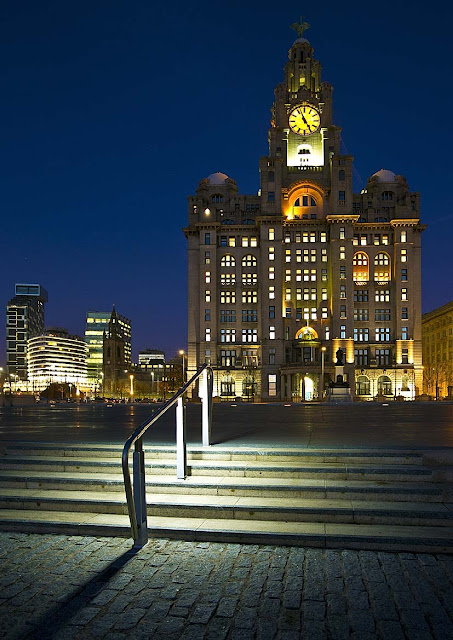After the Sunset.
The aim of this exercise is to explore the variety of lighting effects and colour in artificial light, try to include the following subjects:-
- A floodlit building.
- A brightly-lit store front.
- A large interior with many people, such as a shopping centre.
- Light streaks, such as traffic on a busy road.
The next photographs were taken in Nantwich, I looked around the town centre, but could only find buildings that were lit by Sodium lights, I've included two as an example of this kind of lighting.
Next I tried my local railway station, Crewe, from past experience I knew there was a variety of lighting on the platforms. The first two photographs were taken on different white balances as shown, the one using Auto is closest to the light I remember when the picture was taken.
Next, two photographs taken with the ISO increased to enable me to hand hold the camera, also attempting to stop subject movement. This part of the station has a type of sodium lighting, similar to the lighting in the pictures above, I selected Auto white balance in the raw converter of Photoshop, the result seems better than the camera's Auto setting, unless the lights were of a different type.
ISO 12800 1/45sec f8
ISO 25600 1/60sec f8
For the remainder of this exercise I used the Daylight white balance setting on the camera, the first picture shows the interior of a train, the light appears almost white. The remaining photographs were taken at other parts of the station where the lighting was a lot brighter, the images taken there appear more natural. The course book says that Mercury vapour lamps give off a blueish white light, I assume that some parts of the station are lit with them.
Having tried my local area I went to Liverpool to look for more examples of lighting, I was not disappointed. I made for the area around the Pierhead where I knew there was a variety of old and new buildings. The older buildings are floodlit so made excellent subjects for photography, combined with the brightly lit interiors of the newer buildings. I also found L.E.D lights set into the handrails of steps and fluorescent lights built into the concrete backs of seating along the river side path. The following photographs are just a sample of the ones taken.
The next two photographs are an example of how fluorescent lighting can alter the white balance in a scene. Both images were taken without changing position, I simply turned the camera round 90 degrees, the first picture includes the Fluorescent lights whereas the second does not.
My final photograph was taken after the twilight had gone from the sky, it is proof of how much better pictures taken with some light in the sky are. The tops of the buildings have almost been lost because the contrast has been increased so much after it went completely dark.
I've learned how important it is, to be aware of the different kinds of lighting and to know how it can change an image, the advantage of photographing in raw is something I have known about for some time, doing this exercise has reinforced this. However I did not fully realise the effect that Fluorescent lighting has on a scene and the changes it makes when mixed with other types of lighting. Finally I have learned how important it is to have some light left in the sky when photographing the exteriors of buildings, for example, in particular the contrast can be kept in check by that small amount of twilight.





















No comments:
Post a Comment